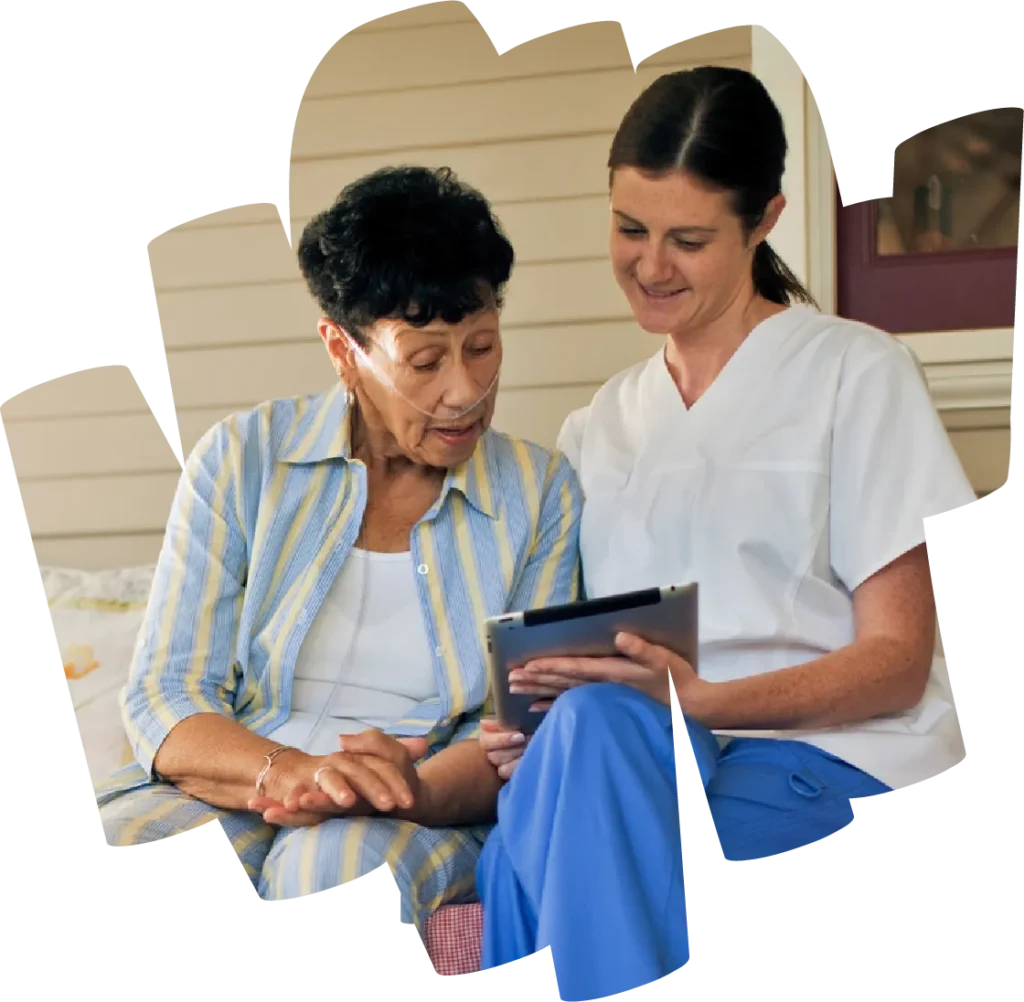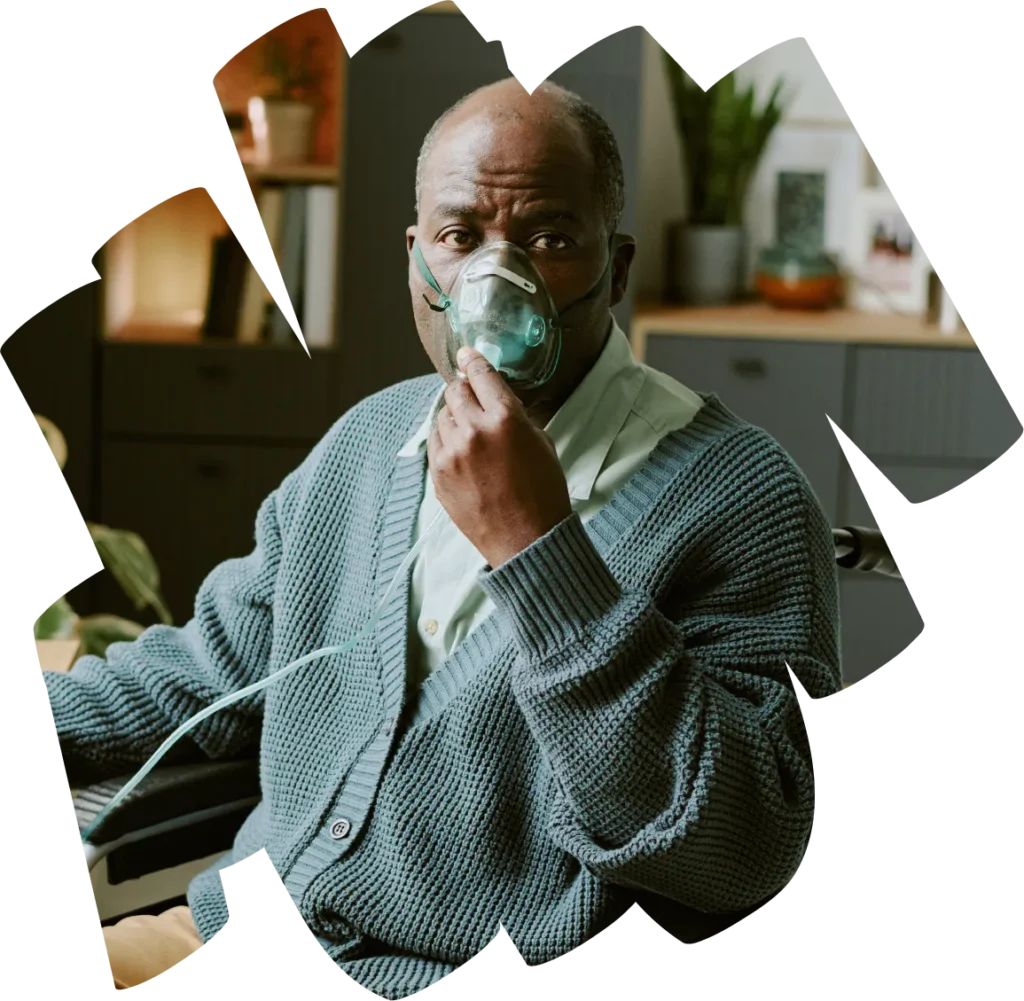Know what to do
when it happens to you.
Every person using medical equipment at home needs to be prepared for an electrical failure.





About
If you are using medical equipment at home, an electrical failure can be life-threatening. With extreme weather happening more often, electrical failures may last longer.
Only 7% (1 in 14) of people with medical equipment have back-up power, and many wrongly think that their electricity will be fixed quickly. Even if you have told your electricity company that you are a Life Support Customer, you still need an Electrical Failure Plan.
Having a Plan ensures you are prepared if the electricity fails, while your electricity company works to fix it. Always call 000 in an emergency.
We are asking you to:
Check
The ‘Electrical Failure Checklist’— it is the first step to completing your Plan.
View checklist section
Plan
Ahead with your helpers by completing your ‘Electrical Failure Plan’. Share it with those in your community who you will go to for help.
View plan section
Do
So when the electricity fails, you will know what to do.
My Electrical Failure Checklist
Start thinking about what you need
1.
Helpers
Talk to people who can help you.
Read moreless
- Talk to your doctors, carers, and others who can help during an electrical failure.
- Let your family members, neighbours, and electricity company know your needs.
- Tell your electricity company that you are a Life Support Customer.
2.
Safety needs
Have everything you need to keep you safe and well.
Read moreless
- Know what medical equipment you need, including how long you can use it with back-up electricity.
- Consider back-up electricity options, like solar batteries or a generator.
- Have enough medicines, food, and water for 3 to 7 days, including for pets!
- Keep your car fuelled or charged, especially during extreme weather warnings.
3.
Talking and receiving information
Have you thought about how you will talk to people and receive information?
Read moreless
- Keep your mobile phone charged and have a back-up electricity source, like a portable charger.
- Save important numbers in your mobile phone, like your family members or neighbours.
- Have a battery-powered or hand-crank radio in case your internet and phone stop working, so you can stay updated on emergency information and weather conditions.
- Talk to people who live nearby and further away about checking if you are okay during an electrical failure.
4.
Light
Have you thought about how you will see when the lights stop working?
Read moreless
- Make sure you have torches or battery-powered lights. You should have extra batteries in case these stop working. Remember: Try not to use candles, so you do not accidentally start a fire.
- Keep your back-up lights in an easy-to-find place, in case you have to find them in the dark.
5.
Comfort
How will you stay comfortable?
Read moreless
- Think about how you will stay warm or cool without electricity (like keeping your blinds down).
- Keep extra blankets and warm clothing in an easy-to-find place.
- Think about different ways to cook food when the electricity fails (like a camp stove).
- Think about what you might need if you had to leave your home and stay somewhere else (like medicines and extra batteries).
6.
Around your home
How will you keep your home, property, and the roads safe?
Read moreless
- Know how to open and close garage doors, gates, and electric doors by hand.
- Think about how you will leave home in an emergency, like where you will go and how you can get there safely.
- Think about how you will keep food you have in your fridge and freezer safe and fresh. Find more information here.
My Electrical Failure Plan
Everyone wants you to know what to do in an electrical failure.
Because talking about what you need today, could save your life tomorrow.
1. Download
Download the digital documents to complete on your computer or print a hard copy and complete it by hand.
2. Create your plan
On computer
Once you have completed your plan on your computer, make sure to save the digital document and email it to others who can help.
By hand
Print the digital document and complete your plan. Once completed, do not forget to leave it in an easy-to-find place.
3. Email
You can also email a blank Plan to someone else for them to complete.
Check if you can get help with electricity payments
The Australian Government and many state governments offer money to people with medical equipment or special health needs. To find out more, visit www.energy.gov.au/rebates
Stories
What people are saying
Hear stories from people using life-saving medical equipment and their care teams, who are creating Electrical Failure Plans that are right for them.
Living with muscular dystrophy, I need electricity to keep me safe.
I use an electric wheelchair and electronic bed, hoist, front door, and a breathing machine. Knowing what to do in an electrical failure could save my life. I will be working on My Electrical Failure Plan with my helpers right away.”
Carolyn
I live with cerebral palsy and some years ago, I went five days without electricity.”
While I was in extreme pain without electricity for my medical equipment, I realised that others would be needing it for every breath. This event taught me the importance of having an Electrical Failure Plan with the help of a doctor and care team. Being prepared, and knowing what to do, could literally save your life.”
Adam
I care for my wife whose health makes her need electricity to stay safe and well.
It is very important to know what to do and to share information with people who can help you about what you will need in an electrical failure. Having a plan allows you to write it all in one place and talk about the right things with people.”
Peter
Living with my kidney disease is hard, and dialysis at home is a need for many.
Knowing what to do in an electrical failure and having a plan is very important. You need to have an emergency kit ready that is specific to your needs. My Electrical Failure Plan helps you to be prepared and think of what you will need to stay safe ahead of time. That can help you stay calm when the electricity stops working; because you will know what to do.”
Irene
From what I have lived through, I know how important it is to learn how to use all life-saving equipment, and how to help when someone’s breathing stops, before going home from the hospital, in case of an emergency.
A well-practised safety plan shared with caregivers, helpers and community service providers is very important when there is an unplanned electrical failure. Learning to use back-up equipment such as a generator is needed, so people know exactly what to do and feel prepared and able to help when required to act quickly.”
Jodi (Mum of Cosette)
More information
Where to go for more information
For more information during electrical failures, visit or call your local electricity company.
Queensland
New South Wales
If you live in Sydney, the Central Coast and Hunter region, visit or call Ausgrid
If you live in Sydney’s Greater West, Blue Mountains, Southern Highlands, the Illawarra and South Coast, visit or call Endeavour Energy
Victoria
If you live in Melbourne city and the inner-suburbs, visit or call CitiPower
If you live in the southern suburbs and Mornington Peninsula, visit or call United Energy Distribution
If you live in the western suburbs and western Victoria, visit or call Powercor Australia
If you live in the outer-northern and eastern suburbs and eastern Victoria, visit or call AusNet Services
South Australia
If you live in South Australia, in most places you can visit or call SA Power Networks 24 hours a day, 7 days a week
If you live far away from Adelaide city centre, you may receive electricity through your local council or similar company; check your electricity bill or with someone who lives nearby if you are not sure.
Tasmania
Western Australia
Northern Territory
If you live in the Northern Territory, visit or call Power and Water Corporation
Find your local radio station/channel to receive important updates
1. Search
Visit reception.abc.net.au to find your local radio station/channel.
2. Write it down
Write the station/channel name down— and keep it near the battery-powered radio in your emergency survival kit.
3. Change your car radio
You can also change the channel to one of your car radio saved stations.
Visit 'how to listen to abc radio in an emergency' for instructions.
Share
Share your ideas on social media!
Help other people to be prepared in an unplanned electrical failure.
Share on social media using these hashtags
#ElectricalFailurePlan
#CheckPlanDo
#KnowWhatToDo
Share
Supporters
Proudly supported by the Australian Medical Association

The Consumer Health Forum of Australia supports electrical failure planning for safety and wellbeing, especially for those using medical equipment in the home.
The Royal Australian College of General Practitioners has provided advice and feedback on the Life Support Electrical Failure Plan to help doctors provide their patients with healthcare which meets their unique needs.
This plan is supported by the Energy Charter and was created with help from: the Life Support in the Home Lived Experience Group; our Community Outcomes Group (made up of health workers and customers); and electricity companies through the #BetterTogether Life Support Customer plan. See the full list of organisations involved here.
The Energy Charter is an organisation that joins community groups with electricity companies to make sure they put people’s needs first.
Thank you to the Community Outcomes Group including: Consumers Health Forum of Australia; Energy and Water Ombudsman Queensland; Justice and Equity Centre; Life Support Medical Advisory Group (represented by the Australian Medical Association); and WA Dept of Energy, Department of Energy, Environment.
Thank you also to the Energy Industry Supporters, led by Essential Energy and SA Power Networks together with ActewAGL, Australian Gas and Infrastructure Group, AusNet Services, Aurora Energy, Endeavour Energy, Energy Queensland (including Energex, Ergon Energy Network, Ergon Energy Retail + Yurika) and TasNetworks.